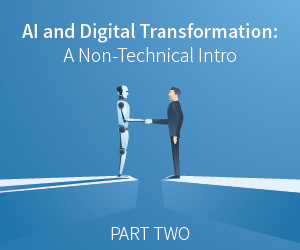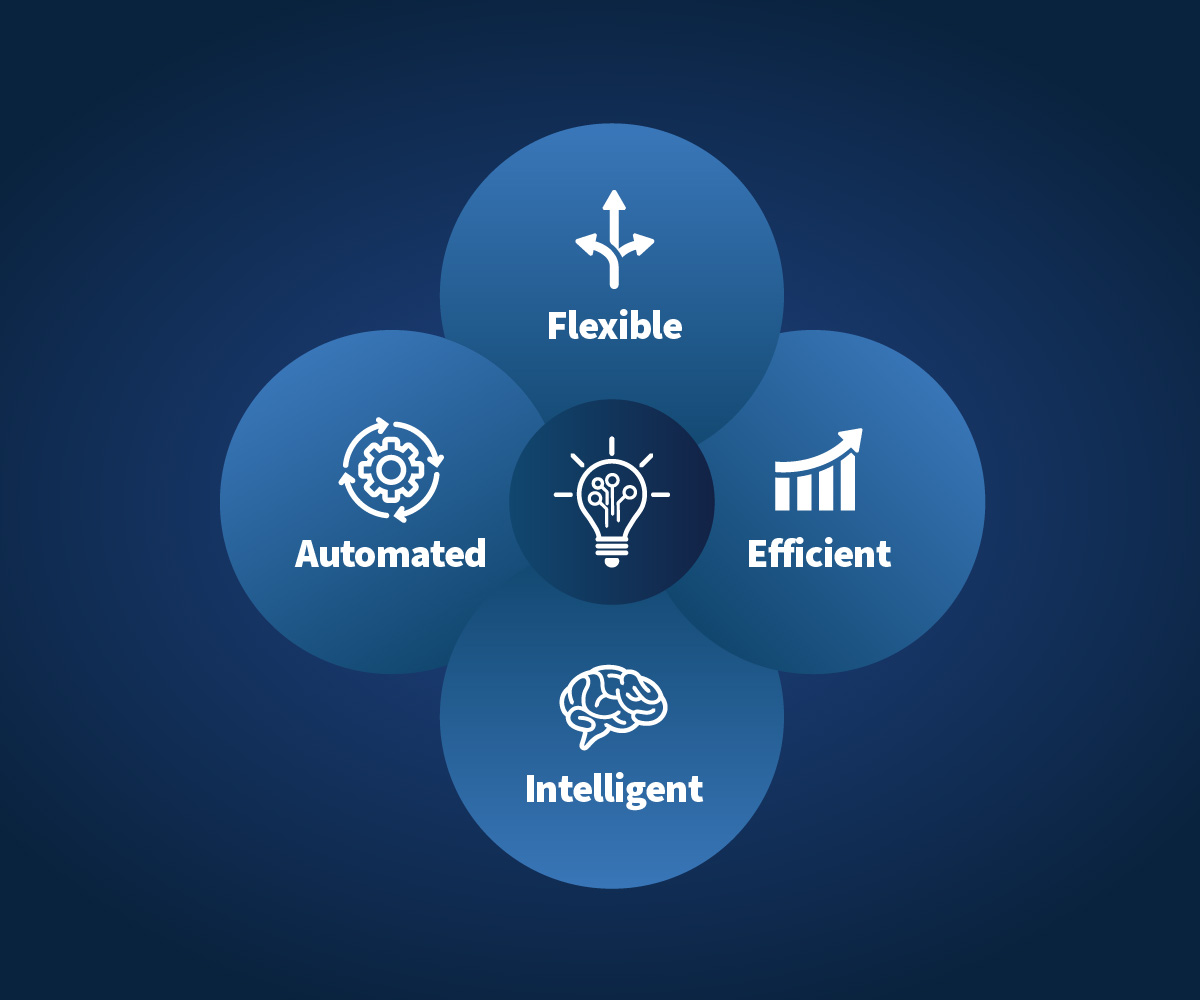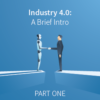This commentary is offered by Christian Popp, Chief Customer Officer of MINT Software Systems.
To read part one of this series, click here.

To preserve our mastery in a digitized world, we need to match the technical capabilities of new technologies with an application strategy for our benefit. To do that, we need a working, albeit basic, understanding of these new technologies. As Jack Welch, former CEO of GE put it, “Control your own destiny or someone else will.”
Artificial intelligence is not the same as human intelligence. Nevertheless, this analogy is useful because AI attempts to imitate human cognitive abilities and aptitudes. In other words, AI is the branch of computer science that seeks to create systems that can function independently, and even mimic human behavior or abilities, creating an approximation of intelligence.
To do this, AI programming tends to focus on three primary cognitive skills: learning, reasoning, and self-correction. These AI cognitive skills are used in specific applications such as expert systems, natural language processing, speech recognition, and machine vision.
The following examples illustrate common ways that AI is being used in a variety of technologies:
Automation: pairing AI technologies with tools for automation can increase both the volume and the types of tasks that can be automated. For example, Robotic Process Automation (RPA) is a type of software that automates repetitive, rules-based data-processing tasks typically done by people. Adding machine learning and other AI-enabled tools, RPA can automate, respond to changes in process, and work autonomously and in conjunction with people.
Machine Learning: the process of getting a computer to act without prior programming. A subset of machine learning is Deep Learning, for which a specific and narrow application leverages predictive analytics. One application is the “next most logical word” suggestion when composing a message on a mobile device.
Machine learning algorithms include:
- Supervised learning: data sets are labeled in such a way that the algorithm can detect patterns, and these patterns can then be used to identify and label new data sets.
- Unsupervised learning: in this model, data sets are not labeled, and the algorithm sorts them according to similarities or differences.
- Reinforcement learning: like unsupervised learning, data sets are not labeled, but after the algorithm performs an action or several actions, feedback or reinforcement rewards improve subsequent actions, in the same way human learning occurs.
Machine Vision: enables machines to “see”; that is, it captures and analyzes visual information. A camera captures an image, converts the analog-into-digital image into something that can be understood by a machine, and finally, processes the digital signal. Machine vision is often compared to human eyesight, but it is not bound by the biological limitations of the human eye. Common uses for machine vision include applications such as signature identification and medical image analysis. (Computer vision is often conflated with machine vision but mainly focuses on machine-based image processing.)
Natural Language Processing: the most widely known example of NLP is spam filtering. Other common NLP tasks include translation, sentiment analysis, and speech recognition (Siri, Alexa, etc.); most current approaches to NLP are based on machine learning.
Robotics: the development, design, and manufacturing of robots. Robots can be used for tasks that are difficult for humans to complete or to perform consistently. For example, robots are used in assembly lines for car production or by NASA to move large objects in space. Researchers are also combining robotics with machine learning and machine vision to build robots that can interact in social and dynamic environmental settings.
Self-Driving Cars: this very complex task – driving a vehicle to a destination while staying in a given lane and avoiding obstacles such as other cars and pedestrians – combines many aspects of AI, including computer vision, image recognition, and deep learning.
As excitement and interest in AI has accelerated, businesses have tapped into this by promoting and marketing the ways that their products and services use AI. Often, however, what they refer to as AI is simply one component of AI, such as machine learning. Not every claim of AI technology lives up to the hype of the promotion. Writing and training AI components, such as machine-learning algorithms, requires a foundation of specialized hardware, software, and expertise.
Artificial intelligence’s power, potential, and flexibility have led to its adoption in various markets:
AI in Business: machine learning is being integrated into analytics and customer relationship management to discover ways to serve customers better. Many websites have incorporated AI chatbots to provide immediate service to customers. The future of automation of job positions is an important subject of study for many academics and IT analysts.
AI in Education: by freeing educators from certain repetitive tasks, such as grading, they can have more time to focus on meeting the specific needs of their students. AI has the potential to automate grading and to assess students and adapt to their needs. Future developments of AI in education could even change where and how students learn, perhaps even replacing teachers.
AI in Banking: banks have successfully employed chatbots to make their customers aware of services and even to handle transactions that do not require human intervention. In addition, AI virtual assistants are being used to improve and lower the cost of compliance with banking regulations. Banking organizations also use AI to enhance their decision-making for loans, to set credit limits, and to help identify investment opportunities.
AI in Transportation: in addition to operating autonomous vehicles, AI is used in transportation to manage traffic, predict flight delays, and make ocean shipping safer and more efficient.
AI in Aviation Training: One promising application of AI is to measure training efficiency and effectiveness. On the commercial side, training organizations are interested in ensuring resources are planned, allocated, and assigned most efficiently to manage and reduce costs. AI will assist in maximizing training resources without compromising training effectiveness. The automation of administrative tasks such as record-keeping, training assignments, compliance checking, and cost recording will reduce manual labor.
The application of NLP will change the way students and training organizations interface with training and learning management systems (TMS / LMS). NLP technology promises proactive training assistance to guide trainees through the learning experience, voice-controlled initiation of systems task, and computer interfaces.
You’re probably familiar with the definition of learning as a change in behavior due to experience. Currently, evidence for behavioral changes is limited to the direct observation and data collection by the training facilitators or examination during training, checking, and evaluation events. In the future, we will be able to collect and evaluate the long-term effectiveness of learning and knowledge retention through AI-aided data fusion from multiple sources. Subsequently, the system will suggest student-specific curriculum design and assignment.
There is no shortage of potential benefits of AI … and sensationalistic headlines. While these new technologies have opened exciting new opportunities, we must guard against “AI solutionism” – the naïve belief that given enough data, machine learning will solve highly complex problems for us. AI will not autonomously identify issues, creatively brainstorm strategic alternatives, evaluate, and decide between the pros and cons. Realistically speaking, AI can assist in the processing of data, provided we humans guide the process. Besides the algorithmic model, the effectiveness of AI depends on data selection and attributes – a task we cannot delegate to machines.







